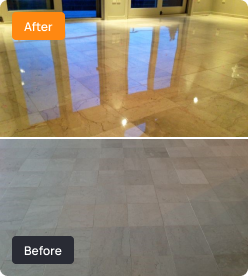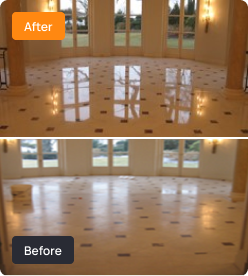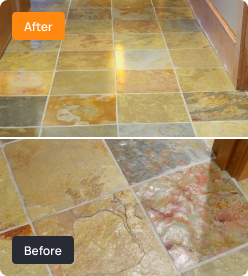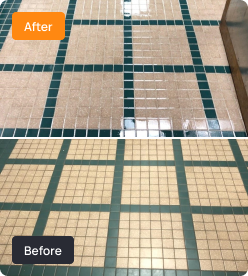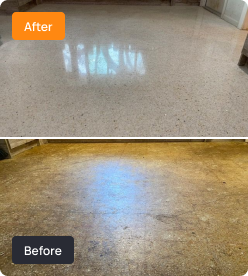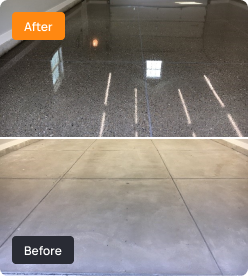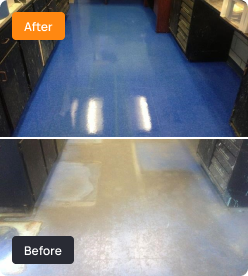MARBLELIFE® Professional Marble Cleaning and Polishing Services
Elevate your spaces with MARBLELIFE®’s trusted marble restoration and marble cleaning services. With decades of experience, we specialize in revitalizing residential, commercial, and monumental properties, ensuring every marble surface retains its timeless elegance and natural beauty.
Our skilled artisans deliver comprehensive marble care, including Marble Restoration, Marble Cleaning, Marble Polishing, and Marble Sealing. Each service is designed to enhance durability, protect against wear, and restore the brilliance of your stone surfaces.
From grand hotel lobbies to elegant countertops and cherished residential floors, MARBLELIFE® tailors solutions to meet the unique needs of every client. Using advanced techniques and unmatched craftsmanship, we bring out the best in your marble while preserving its long-lasting strength.
Trust MARBLELIFE® to restore, protect, and maintain your marble with precision and care. Experience the MARBLELIFE® difference, where quality, expertise, and excellence shine through every detail.
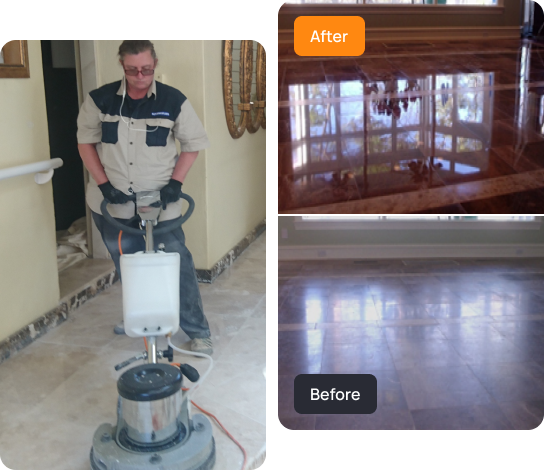
MARBLELIFE® Marble
Cleaning Products
The “InterCare”-based MARBLELIFE floor cleaning Kit is a safe, user-friendly, and incredibly efficient method of cleaning natural stone surfaces.

We Offer Expertise Across All Marble Surface Services
MARBLELIFE specializes in expert marble cleaning and restoration, delivering top-quality results that enhance and protect your surfaces, ensuring lasting beauty for any space.
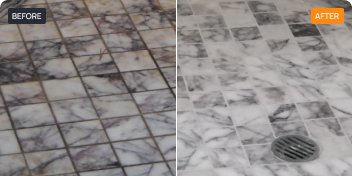
Marble Cleaning
Enjoy spotless, gleaming marble surfaces with our expert cleaning services, designed to reveal the natural beauty of every slab.
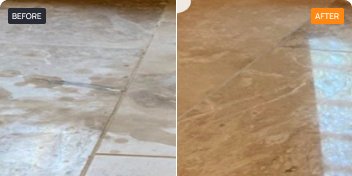
Marble Repair
Count on us to expertly repair and restore your marble, blending seamless fixes with lasting durability and visual appeal.
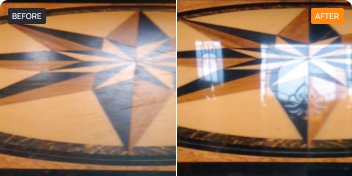
Marble Restoration
We breathe new life into aged and worn marble, reviving its original charm and elegance with precision and care.
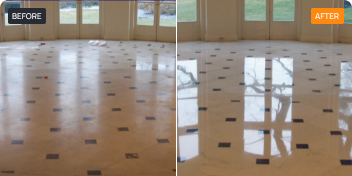
Marble Polishing
Experience the brilliance of perfectly polished marble, achieving a smooth, mirror-like finish that radiates sophistication.
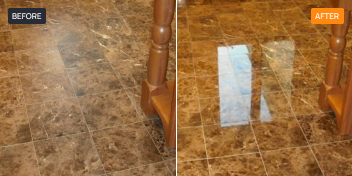
Marble Maintenance
Keep your marble looking stunning for years with our proactive maintenance solutions, designed to protect and preserve its beauty.
didn’t find suitable service?
No cleaner can fix a damaged surface. Contact us today and get your “Cleanable” surface back.
Addressing the Multifaceted Challenges of Marble Surface Care
Marble is admired for its elegance, but over time it can face challenges such as stains, etching, scratches, and dullness. These issues not only take away from its beauty but can also impact its long-term durability.
At MARBLELIFE®, we specialize in professional marble restoration and marble cleaning, addressing everything from etched surfaces and cracked stone to faded marble floors. Our expert team combines proven techniques with specialized tools to restore your marble to its original brilliance.
Whether you want to revive the shine, repair scratches, or refresh the look of your marble surfaces, MARBLELIFE® delivers lasting results with precision and care.
Our specialists create tailored solutions to address every issue, ensuring your marble regains its natural beauty. Trust us to turn challenges into opportunities for flawless marble restoration.
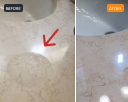
Etching
Acidic spills can leave etched marble with dull, rough marks, diminishing its smoothness and natural beauty.
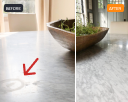
Stain Marks
Stubborn stains from spills, oils, or grime can cling to your marble, tarnishing its pristine appearance.
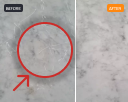
Scratches
Foot traffic, dirt, and abrasive materials can result in unsightly marble scratches, dulling its elegance.
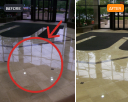
Loss of Shine
Frequent use and improper cleaning can diminish your marble’s luster, reducing its natural glow and charm.

Cracking and Chipping
Impact & structural stress cause cracked marble or chipped edges, compromising appearance and durability.
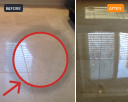
Excessive Lippage
Uneven installation or surface settling can lead to excessive lippage, creating an uneven, hazardous marble surface.
Explore Our Work
didn’t find suitable service?
No cleaner can fix a damaged surface. Contact us today and get your “Cleanable” surface back.
Expert Marble Services for Every Space Imaginable
From private homes to historic landmarks, MARBLELIFE® delivers exceptional marble care tailored to the unique needs of every space.
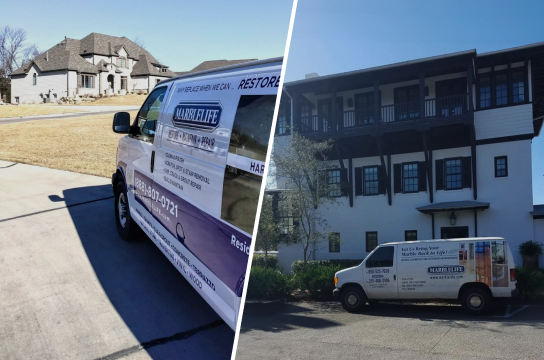
- Home
- Condo
Residential
We transform your home into a sanctuary of elegance with our bespoke marble services, harmonizing beauty and durability in each personalized project.

- New Construction
- Building
- Garage
Commercial
We elevate your commercial spaces with our premium marble solutions, promising not only aesthetics but also an enhanced, durable, and polished professional ambiance.
We Are a Notch Above the Rest in Marble Restoration & Care
MARBLELIFE® sets the standard in marble care, delivering unmatched quality and craftsmanship through expert marble restoration and cleaning services.
See Why MARBLELIFE is the Unrivaled Leader in Marble Care
- Unmatched Expertise: With years of experience, our experts excel at enhancing the natural beauty of marble through precise techniques and proven methods.
- Customized Solutions: Our tailored treatments suit all requirements of your marble to ensure each surface is given individual attention it merits for maximum longevity.
- Innovative Techniques: Our cutting-edge approaches redefine marble restoration, offering advanced solutions that deliver superior results with long-lasting impact.
- Eco-Friendly Practices: We prioritize sustainability by employing eco-conscious methods that protect your marble while being gentle on the environment.
- Dedicated Craftsmanship: Our craftsmen dedicate themselves to perfecting their art, offering services that blend skill with an unyielding commitment to quality.
- Superior Customer Service: Customer satisfaction is our main priority, ensuring clear communication and personalized service throughout.
- Time-Tested Reliability: We pride ourselves on being a reliable partner in marble care, consistently delivering results that stand the test of time.
- Comprehensive Care Packages: From cleaning to restoration, we offer extensive care packages that cover every aspect of marble maintenance, ensuring your surfaces remain flawless and radiant.

Choose Science. Choose Expertise. Choose MARBLELIFE®.
For decades, we have been the trusted partner for countless households, understanding the unique chemistry of your stone surfaces and offering tailored solutions.
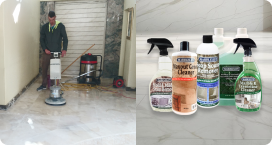
Scientific Solutions
We’re a science company, through and through. We’re in the business of designing solutions that enhance the relationship between people, buildings, and businesses.
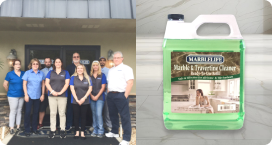
Gold Standard
With over three decades of experience, we’re the gold standard in the industry. We retain a productivity advantage, getting the job done quickly and doing it right on the first go.

Unmatched Coverage
We’re a household name in this industry. With a network of 55 franchises spread across the continental United States, our technical skills and coverage are simply unmatched.

Full-Circle Service
We’re with you from start to finish. We’re the only folks in the surface care industry that manufacture our own products, and the only product manufacturer that works in surface services.
Other Materials We Expertly Service
Frequently Asked Questions
For any specific queries or concerns, feel free to reach out.
MARBLELIFE stands out due to its unmatched expertise and dedication to craftsmanship, offering a range of services from cleaning to restoration that redefine excellence in marble care. Our seasoned professionals are adept at transforming spaces into realms of timeless elegance, ensuring quality and personalized solutions for every project.
Absolutely, MARBLELIFE is well-equipped to address a wide range of marble surface issues including staining, etching, and dullness. Our experts devise personalized strategies to counter each problem, transforming challenges into stepping stones towards achieving impeccable marble beauty.
Yes, MARBLELIFE provides comprehensive marble solutions for a wide variety of spaces including commercial establishments and historic properties. We tailor our expertise to suit the unique requirements of each space, ensuring a harmonious blend of beauty and durability in every project.
MARBLELIFE prides itself on superior customer service, offering smooth, reliable, and transparent interactions at every stage. Our time-tested reliability and comprehensive care packages ensure that we are a dependable partner in marble care, delivering results that stand the test of time.
Yes, apart from marble, MARBLELIFE expertly services a variety of other materials including Terrazzo, Concrete, Vinyl, and Travertine. We are well-versed in understanding the unique chemistry of different stone surfaces, offering tailored solutions to meet your specific needs.
Yes! Whether it’s scratches, etch marks, stains, or dullness, our restoration services can bring your stone back to life. We assess the damage during a free consultation and tailor our approach to your specific needs.
Simply call us at (888) 524-3372 (USA) or (888) 440-6446 (Canada) for a free consultation or enter your zip code on our website to find your local office and request an estimate. We’ll schedule a convenient time to assess your project.
MARBLELIFE specializes in stone restoration, polishing, cleaning, and maintenance for surfaces like marble, granite, travertine, limestone, terrazzo, and tile and grout. We cater to both residential and commercial properties, ensuring your surfaces look their best.
Still confused about the problem?
No cleaner can fix a damaged surface. Contact us today and get your “Cleanable” surface back.
Discover Expert Tips and Solutions

Quick Tips for Removing Hard Water Stains from Marble Surfaces without Damage at Home
Hard water stains can mess up the beauty that marble surfaces add to ours home, making it difficult to preserve their appearance. Further, the application of an inappropriate marble cleaning solutions at home could result in major damage or create conditions for more severe and complicated downstream problems, like
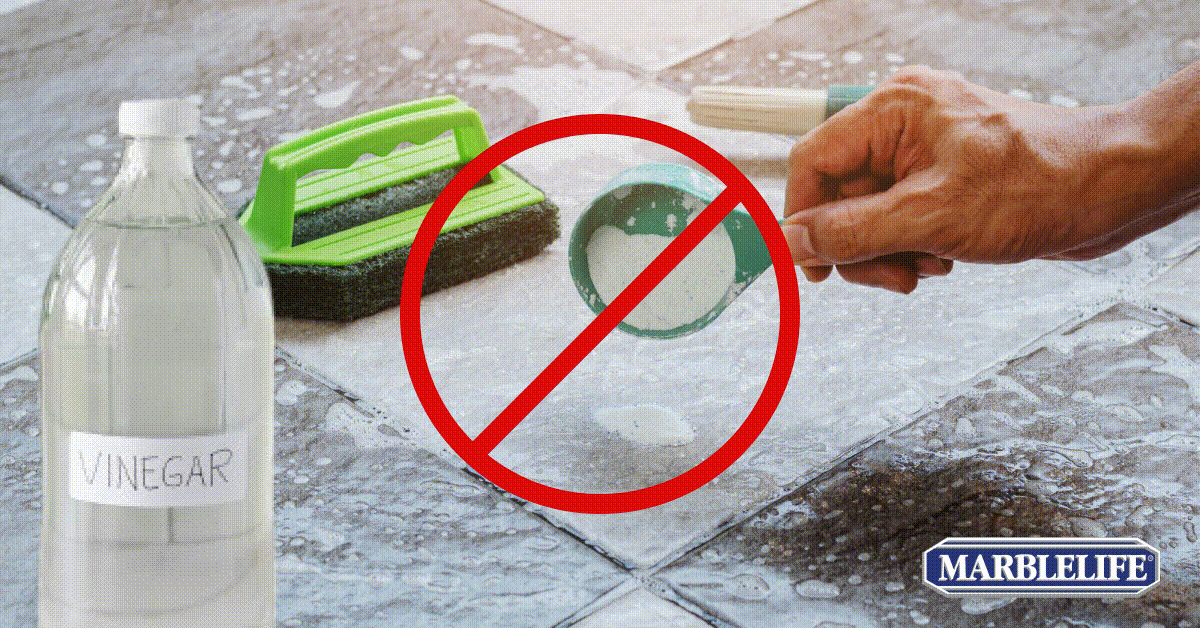
Are You Using Vinegar For Your Marble Cleaning or Other Floors? You Need to Stop that NOW!
Using vinegar for marble cleaning might seem harmless, but it can cause lasting damage to your floors, grout, and stone surfaces. Discover how to clean marble floors the right way, why vinegar isn’t safe for marble, and which natural marble cleaning solutions truly work, without risking dullness or etching.


